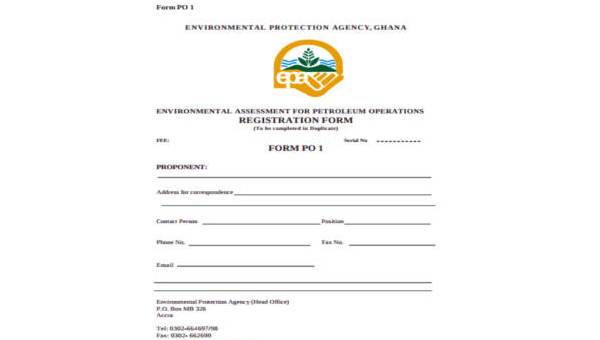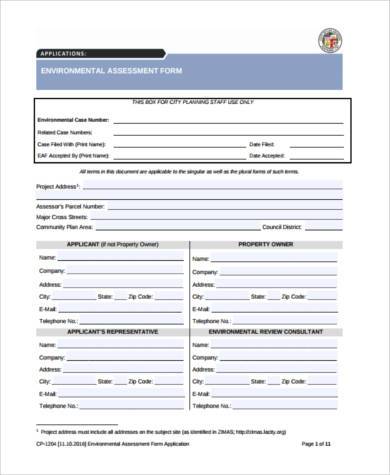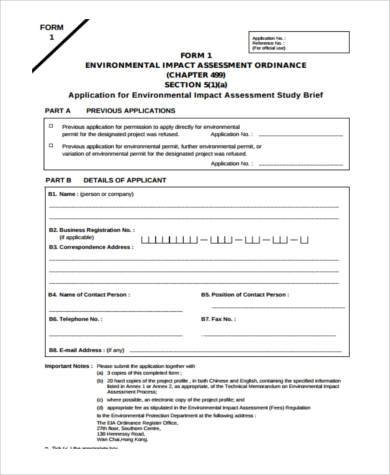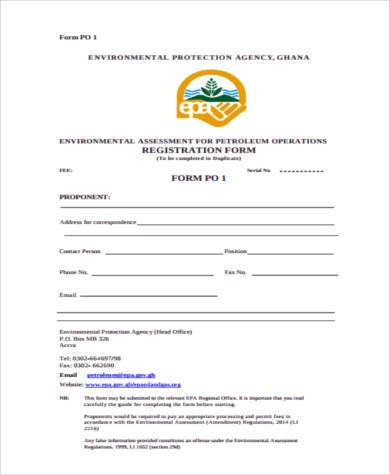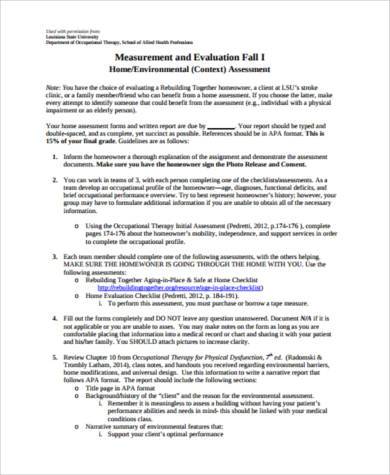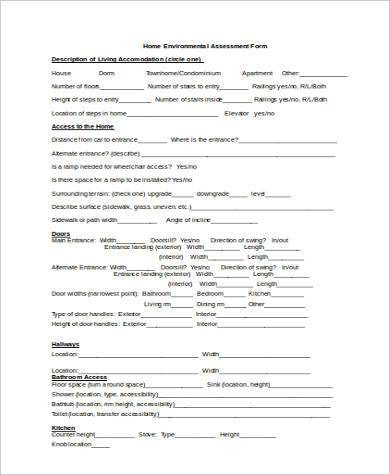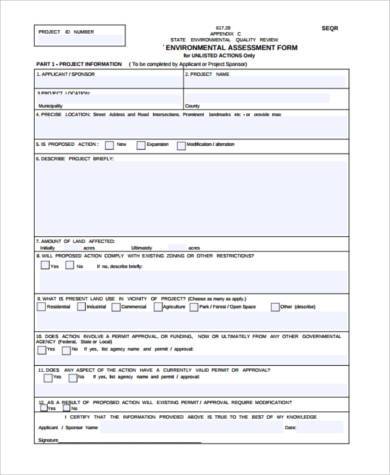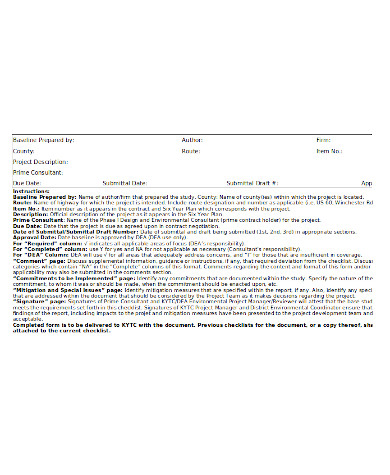Knowing what goes on in the environment is helpful in maintaining our safe and healthy day-to-day lives. Making sure the environment, any form of environment, is kept well-maintained and has good living standards can lead to the improvement of any community or even a major city.
However, how would one assess if their environment is doing well enough, or if it meets with the standards of any health and safety organizations?
Environmental Assessment Forms help with the assessment of any form of environment.
Short Environmental Assessment Form
Full Environmental Assessment Form
Environmental Risk Assessment Form
Environmental Impact Assessment Form
Environmental Assessment Registration Form
The Different Types of Environmental Assessment Forms
There are different forms and different ways of assessing any form of environment. These forms are to make sure that the evaluation is done accurately. Here are a few examples:
- Environment Health Assessment Forms are used to check if a certain environment meets the standards of certain health regulations.
- New Environmental Assessment Forms are forms to check a new type of environment made by companies or organizations, such as new office spaces or facilities.
- Environmental Risk Assessment Forms are used to check the types of dangerous risks that certain environments hold.
- Home Environmental Assessment Forms are forms for checking if a home environment is safe and good enough to house any form of living beings.
- Environmental Self Assessment Forms are used by those who wish to assess their own environments. Examples would be when a company owner wishes to assess his own work environment.
There are those who want to keep it short and simple by using the Short Environmental Assessment Forms. There are also those who decide to make a long and full evaluation of the environment by using the Full Environmental Assessment Forms.
Environmental Risk Assessment Form in PDF
Home Environmental Assessment Form
New Environmental Assessment Form
Environmental Assessment Form Example
Simple Environmental Assessment Form
Why Assessing Any Form of Environment Is Important
Assessing the environment is very important because everything that supports the survival of human beings is dependent on it. Wellness of the environment directly relates to the wellness and health in human beings and every other species.
There are also those factors that destroy certain environments. An example would be a natural disaster like heavy rain causing a heavy flood. This could ruin living environments for most people. There are even cases where people destroy certain environments, either for the sake of creating a new environment, or for the sole purpose of just destroying it.
It’s also for making sure that productivity is increased and improved. Ensuring that any form of environment, like a workplace, is kept well constantly could lead to the improvement of employee productivity.
Related Posts
-
How to Conduct a Risk Assessment? [ With Samples ]
-
FREE 4+ Sample Child Assessment Forms in MS Word | PDF
-
FREE 11+ Sample Financial Assessment Forms in PDF | MS Word | Excel
-
FREE 7+ Sample Health and Safety Risk Assessment Forms in PDF | MS Word
-
FREE 8+ Sample Supplier Assessment Forms in PDF | MS Word
-
FREE 7+ Sample Caries Risk Assessment Forms in PDF | MS Word
-
FREE 7+ Sample Management Risk Assessment Forms in PDF | MS Word
-
FREE 7+ Sample Infection Control Assessment Forms in PDF | MS Word
-
FREE 8+ Income Assessment Form Samples in PDF | MS Word
-
FREE 8+ Education Assessment Form Samples in PDF | MS Word
-
FREE 22+ Sample Self-Assessment Forms in PDF | MS Word | Excel
-
FREE 8+ Job Assessment Form Samples in PDF | MS Word
-
Physical Therapy Assessment Form
-
FREE 11+ Assessment Forms for Teachers in PDF | Ms Word | Excel
-
FREE 10+ Nutrition Assessment Forms in PDF | Ms Word
